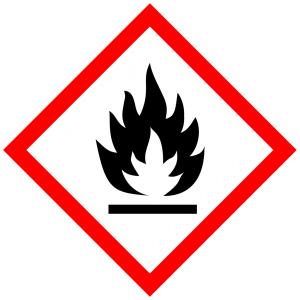 There are a handful of well-known and trusted blogs in the door and hardware industry; one of the most popular being iDigHardware. The site is managed by Lori Greene, AHC/CDC, CCPR, FDHI and as the many acronyms after her name suggest, she knows what she’s talking about when it comes to door and hardware code and specification. That’s why her blog is my go-to resource when I hear there’s a change to the code. She typically discusses the severity of the changes, and this year there are quite significant changes to the care and maintenance of fire doors and inspections in Chapter 5 of NFPA 80. This post was adapted from her article Decoded: NFPA 80 – 2013 Changes in the August edition of Doors & Hardware.
There are a handful of well-known and trusted blogs in the door and hardware industry; one of the most popular being iDigHardware. The site is managed by Lori Greene, AHC/CDC, CCPR, FDHI and as the many acronyms after her name suggest, she knows what she’s talking about when it comes to door and hardware code and specification. That’s why her blog is my go-to resource when I hear there’s a change to the code. She typically discusses the severity of the changes, and this year there are quite significant changes to the care and maintenance of fire doors and inspections in Chapter 5 of NFPA 80. This post was adapted from her article Decoded: NFPA 80 – 2013 Changes in the August edition of Doors & Hardware.
NFPA 80 – Field Modifications
Laboratory approval of field modifications has been mentioned in previous editions of NFPA 80, but is further clarified in the 2013 edition. Chapter 4 (General Requirements) addresses acceptable field modifications.; When a modification is desired that isn’t covered by that section, Chapter 5 states that the listing laboratory shall be contacted through the manufacturer, and a written or graphic description of the modification shall be provided.
From Annex A of NFPA 80 – 2013:
A.5.1.4.1 Field modifications beyond the scope of the prescriptive allowances permitted by 4.1.3.2 through 4.1.3.4 typically result in voiding the fire rating of the assembly. Paragraph 4.1.4.2.1 provides an alternative method whereby proposed modifications can be documented and presented to the labeling agency prior to work commencing. Where the proposed modification(s) are within the parameters of the manufacturer’s procedures and will not degrade the fire resistance of the assembly, the labeling agency is permitted to authorize such modifications without a requirement for a subsequent field inspection.
NFPA 80 – Inspection and Testing
The 2013 edition of NFPA 80 includes additional requirements over and above the annual inspection and testing set forth in the 2007 and 2010 editions.
- When a building code references NFPA 80 – 2013, newly installed fire door assemblies must be inspected and tested.
- When fire door assemblies are repaired and the governing code references NFPA 80 – 2013, the assemblies must be inspected and tested immediately upon completion of the work to ensure that they are in compliance.
- When a fire code references the 2007, 2010, or 2013 editions of NFPA 80 for maintenance of fire doors, all fire door assemblies must be inspected and tested annually.
Records of these inspections must be retained for at least three years, and the media used must be able to survive for the required retention period.
NFPA 80 – Acceptance Testing
The 2013 edition requires the inspections to be performed by a “qualified person,” which added to previous editions requirement of being conducted by individuals with knowledge and understanding of the type of door being testing. The new term was defined in the 2010 edition and is also included in the 2013 edition:
Qualified Person – A person who, by possession of a recognized degree, certificate, professional standing or skill, and who, by knowledge, training, and experience has demonstrated the ability to deal with the subject matter, the work, or the project.
This person is required to do a visual inspection before testing to identify any damaged or missing parts that could create a hazard or affect operation. The acceptance testing must include closing the door by all means of activation, and a record must be kept documenting the inspections and testing.
NFPA 80 – Inspection Criteria
In addition to the 11 inspection criteria previously included in the standard, two new criteria have been added (numbers 1 and 3):
5.2.3.5.2 As a minimum, the following items shall be verified:
- Labels are clearly visible and legible.
- No open holes or breaks exist in surfaces of either the door or frame.
- Glazing, vision light frames, and glazing beads are intact and securely fasted in place, if so equipped.
- The door, frame, hinges, hardware, and noncombustible threshold are secured, aligned, and in working order with no visible signs of damage.
- No parts are missing or broken
- Door clearances do not exceed clearances listed in 4.8.4 and 6.3.1.7
- The self-closing devise is operational; that is, the active door completely closes when operated from the full open position.
- If a coordinator is installed, the inactive leaf closes before the active leaf.
- Latching hardware operates and secures the door when it is in the closed position.
- Auxiliary hardware items that interfere or prohibit operation are not installed on the door or frame.
- No field modifications to the door assembly have been performed that void the label.
- Meeting edge protection, gasketing and edge seals, where required, are inspected to verify their presence and integrity.
- Signage affixed to a door meets the requirements listed in 4.1.4.
Any deficiencies noted during the inspection process must be repaired “without delay,” but this has already been present in previous editions.
These changes will maintain the hard-earned integrity of newly installed fire doors throughout the entirety of their lifespan. Fire doors can be present for decades, and proper maintenance and continued inspection are crucial for them to operate as intended.
Google
